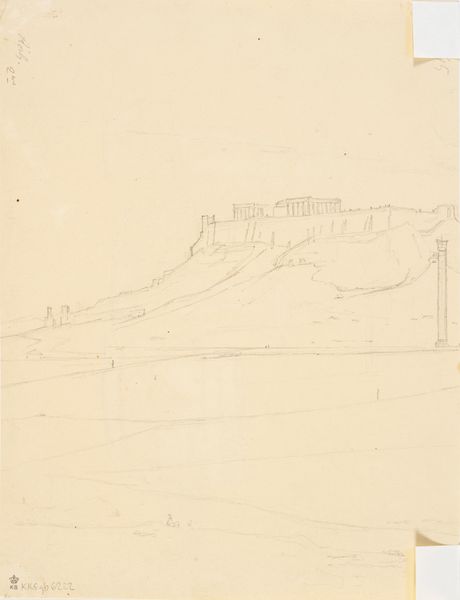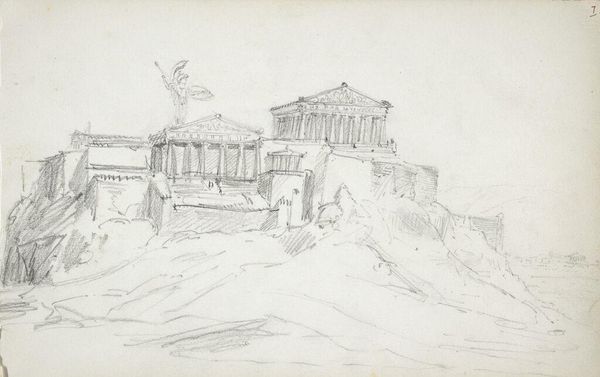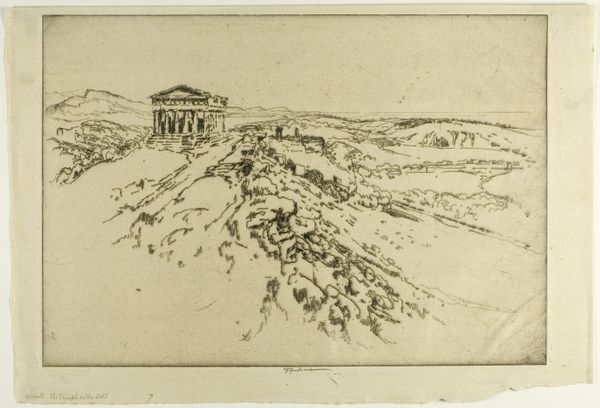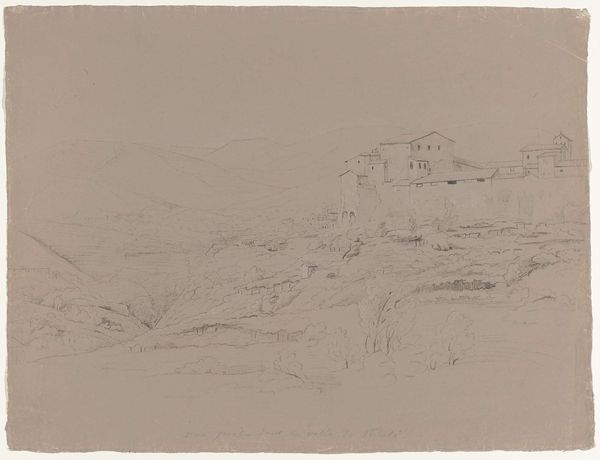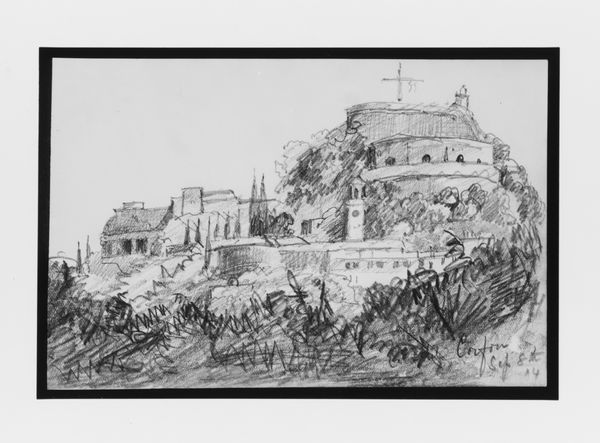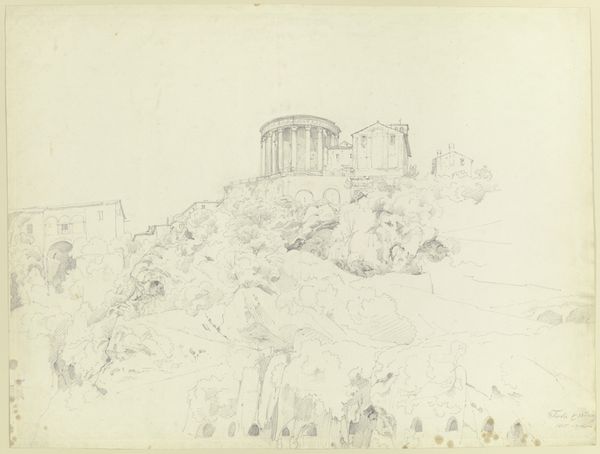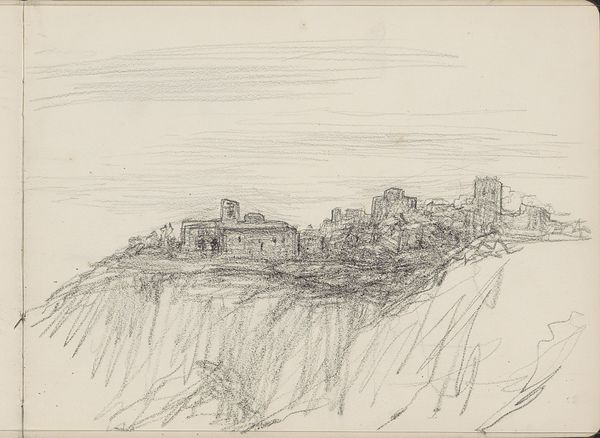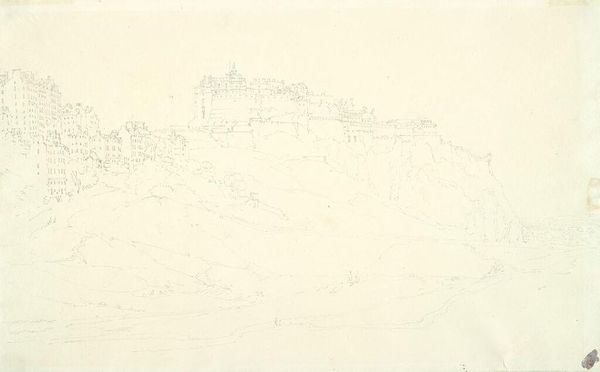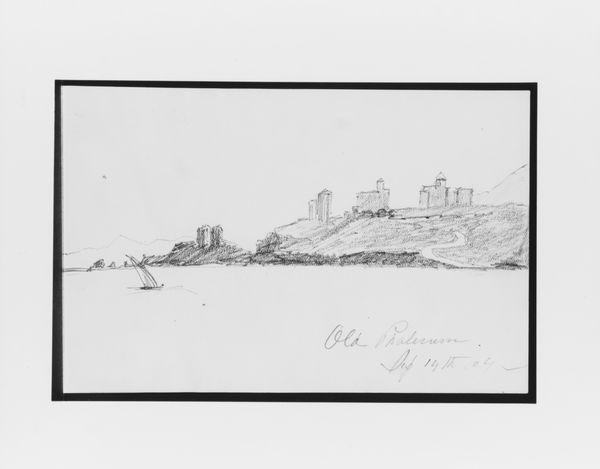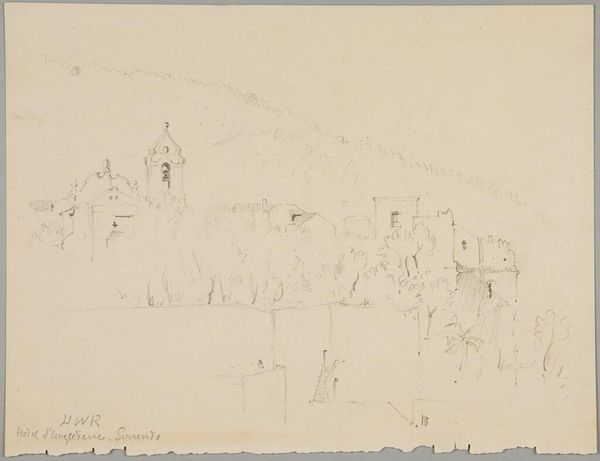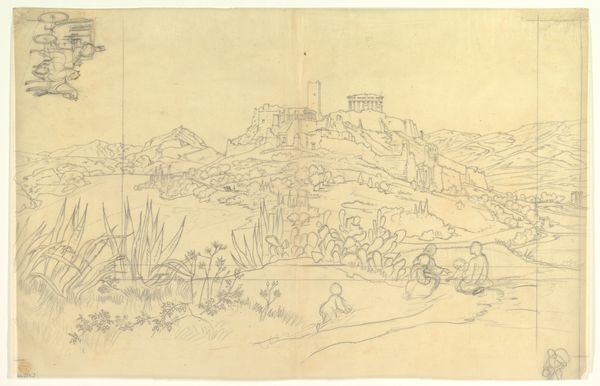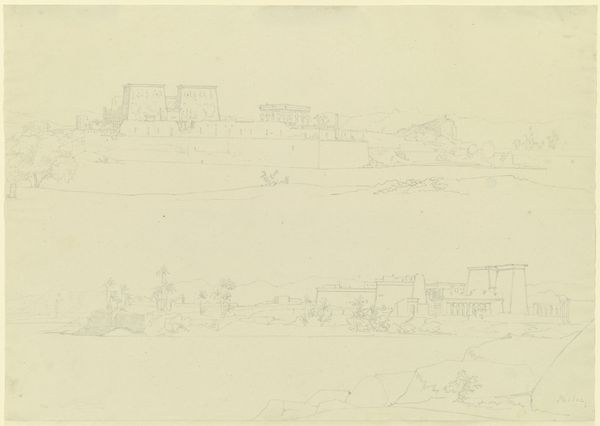
Sketch of Ancient Ruins on Hilltop (from Sketchbook) 1904
0:00
0:00
drawing, pencil, architecture
#
drawing
#
landscape
#
classical-realism
#
ink line art
#
geometric
#
ancient-mediterranean
#
pencil
#
pencil art
#
architecture
Dimensions: 5 1/4 x 8 1/4 in. (13.3 x 21 cm)
Copyright: Public Domain
Curator: Here we have Mary Newbold Sargent’s "Sketch of Ancient Ruins on Hilltop (from Sketchbook)," created in 1904 and currently held at the Metropolitan Museum of Art. Editor: The sketch immediately gives me a sense of distance and decay. The pale pencil strokes render the ruins as almost ethereal, far removed from their original function and imposing scale. Curator: That distance you describe is crucial. Consider the socio-political context of 1904 – what does it mean for an American artist to sketch classical ruins? It's more than just admiring history; it speaks to the contemporary imperial project of claiming a lineage and legitimacy through engagement with antiquity. Editor: Interesting point. But the physical act of sketching here—the mark-making, the subtle gradations of graphite—speak volumes about the artist’s engagement with materiality. We see Sargent carefully translating architectural mass into delicate, almost ephemeral lines. I’m curious about her choice of medium and its impact. Curator: Exactly! Pencil allows for a certain softness, a visual language that refrains from asserting absolute truth. Think about who gets to claim 'truth' and how classical aesthetics have been weaponized throughout history, particularly regarding gender, race, and cultural dominance. Editor: And by depicting the site through pencil, Sargent avoids the connotations of permanence associated with, say, stone carving—another critical part of ancient construction methods. The drawing itself becomes a statement about fragility and change. It reflects back on the materials, and how society interprets labor through the quality of art created through that labor. Curator: That opens up questions of class and access too. Who travels, who sketches, and who inherits the legacy of these "ancient ruins?" Sargent, a woman of her time, moved within a specific social stratum. Recognizing this helps us deconstruct romantic notions of art for art's sake. Editor: It highlights the selective lens through which we view the past. This artwork really becomes an important exploration on what matters, materially and historically, when we choose how and what to sketch in pencil and in art, and which buildings survive to the modern age. Curator: Precisely. We can now look beyond a mere picturesque scene to discover powerful echoes about identity and legacy.
Comments
No comments
Be the first to comment and join the conversation on the ultimate creative platform.

